Located on the shores of Lake Titicaca, Puno is one of the largest cities in Southeastern Peru. Situated at 3840 meters above sea-level, Puno is breathtaking in a very real way. In addition to being a gateway to Bolivia, Puno is also the launch-point for visits to the islands of Lake Titicaca – the world’s highest navigable lake. After trekking the Colca Canyon, I took my Peru Hop transport from Arequipa to Puno for memorable visit that included a life-changing experience staying on a homestay with an indigenous family on an island in Lake Titicaca.



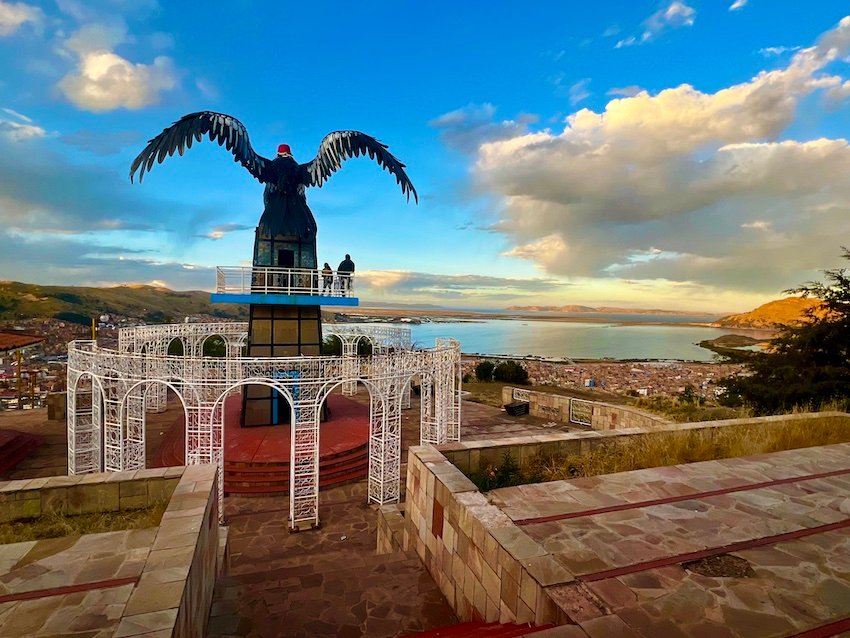
This post includes affiliate links. If you make a purchase via one of these links, I may receive a small percentage at no extra cost to you.
Contents:
- Things to do in Puno
- Where to stay in Puno
- Homestay on Lake Titicaca
- Uros Floating Islands
- Amantani Island
- Taquile Island
- Final thoughts my Homestay Experience on Lake Titicaca
Things to do in Puno:
Aside from being a launch point for excursions to the islands of Lake Titicaca, Puno is not an overly touristic city. Nevertheless there are certainly some points of interest worth visiting should you find yourself with a day or two in Puno.
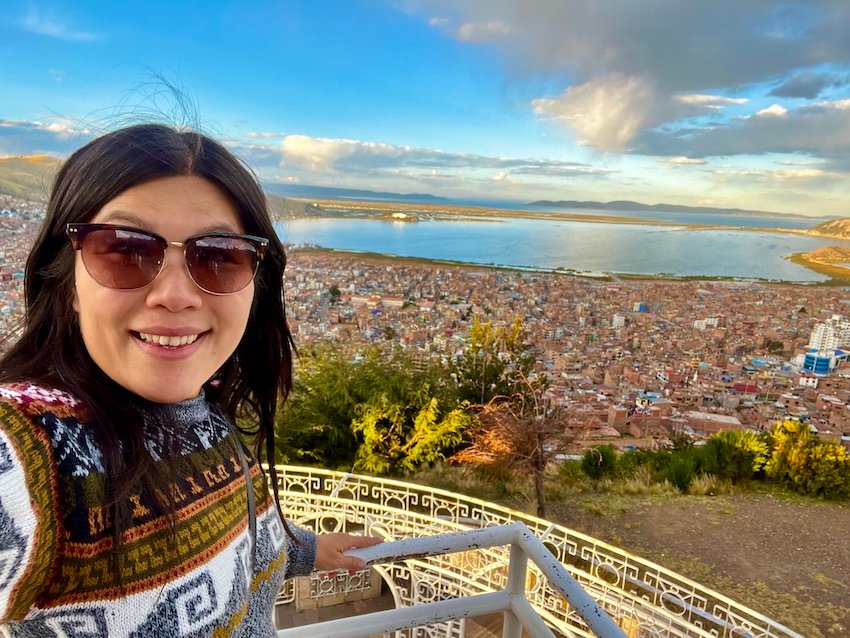



The Casa del Corregidor is the oldest colonial house in the city, dating back to the 17th century. It used to be the house of the Spanish governor general of the region who was responsible for levying taxes and duties for the crown. It has been converted to a cultural centre with a cafe/restaurant and beautiful courtyard where you can enjoy a cup of coffee and snacks.



If you’re doing well with Puno’s 3840M of altitude, consider walking to the Mirador del Condor – a stunning viewpoint less than 2KM from the city centre. Be aware that the walk to the viewpoint brings you to nearly 4000M of elevation (approximately 3970M) so if you’re already struggling with the altitude, know that it’s going to one of your more challenging 2KM walks.

Where to Stay in Puno:
Budget:
I stayed at the Maya Inn conveniently close to Lake Titicaca and the Port of Puno. I had a private room with bathroom here for less than $10USD a night. The hotel also let me store my bigger backpack here free of charge while I went on my homestay excursion on Lake Titicaca.

Mid-Range:
Great mid-range hotels close to the city centre in Puno include the INCA Palace Puno and Kaaro Hotel. If you need to do laundry, the Kaaro Hotel has free laundry service! Both are in $20USD range.
Higher-end:
With its panoramic water views and exceptional service and reputation, the GHL Hotel Lago Titicaca is very likely the best hotel to stay at in Puno. The hotel is actually located on its own little island not far from Puno city centre. Despite being on an island, the property is easily accessible, as there is a road and walkway connection to the mainland.

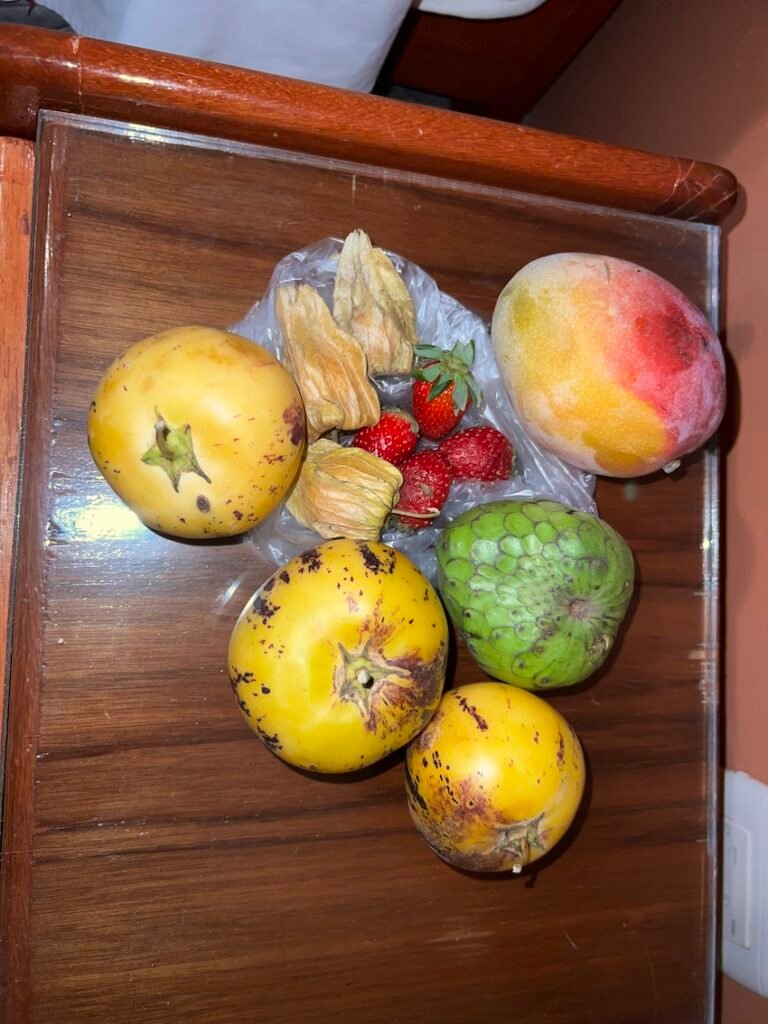
Unique stay:
For something entirely different you can stay on various overnight accommodations on the Uros floating islands. The Uros Amaru Marka Lodge is a well-reviewed higher end option, and the Urosfood & Titiqaqa Lodge provides more rustic private room options with kitchenettes

Homestay on Lake Titcaca:
One of the most memorable experiences of my sabbatical year has been my homestay experience on Lake Titicaca. My 2 day, 1 night homestay excursion picked me up from my hotel, and transported me to the Puno dock where I boarded a boat that would first take me to the Uros Floating Islands, and then to Amantani Island where I would stay with a local indigenous family. On the way back to Puno the next day, the boat stopped at Taquile Island for some exploration and lunch before dropping us back at our accommodations in Puno.
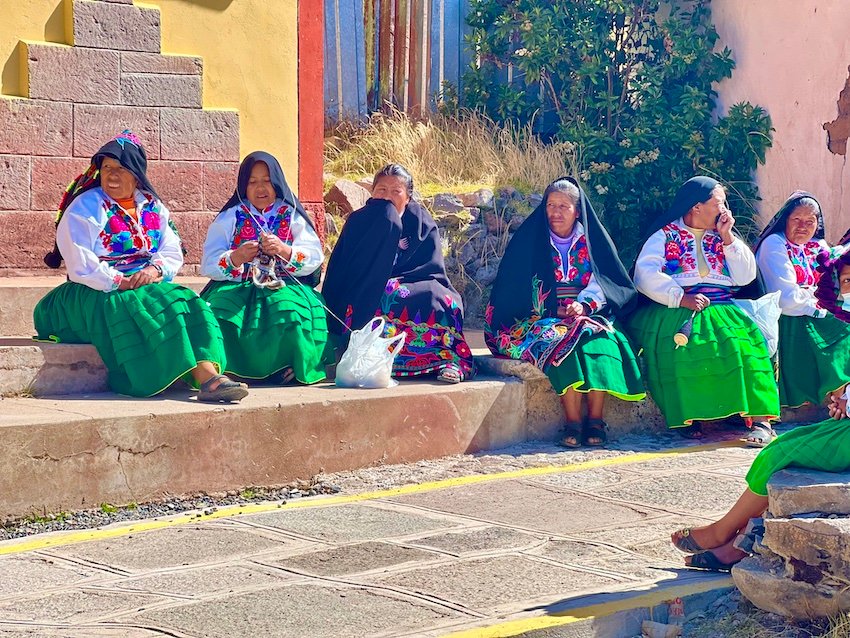
Uros Floating Islands:
The mystical floating islands of the Uros people of Lake Titicaca are located about 5 kilometers from the Port of Puno. The indigenous Uro people migrated to Lake Titicaca from what is Bolivia nearly 4000 years ago. The Uro people eventually built floating cities on islands made exclusively of the Totora reed on the lake in order to evade the invading Incas. Approximately 2000 people of Uro-decent still live on the 120 or so floating islands.



My two-day tour first took me to visit one of the Uros floating islands where we were given a presentation about life and customs on the floating islands. One of the most interesting take-aways of the presentation was the importance of the Totora reed in not only the construction of the floating islands, but also its use for the construction of the houses that the Uros people live in as well as being a source of food. There were opportunities to buy handcrafted art at the end of the visit, as well as an opportunity to go for a short boat-ride on a Totoro-reed boat for an extra cost of 10 Sols per person.

Amantani Island:
The natural island of Amantani in Lake Titicaca is where I had my homestay experience. The island has a population of about 4000 inhabitants – primarily Quechua speakers – who are culturally distinct from the Uros people of the floating islands we visited earlier in the day. The island has two mountains – Pachatata “father earth” and Pachamama “mother earth”. The terraced hillsides of the island are cultivated with wheat, quinoa, potatoes and other vegetables, and livestock such as sheep are also prevalent throughout the island. We arrived at Amantani Islands around noon, and we greeted warmly by our assigned host families at the dock.
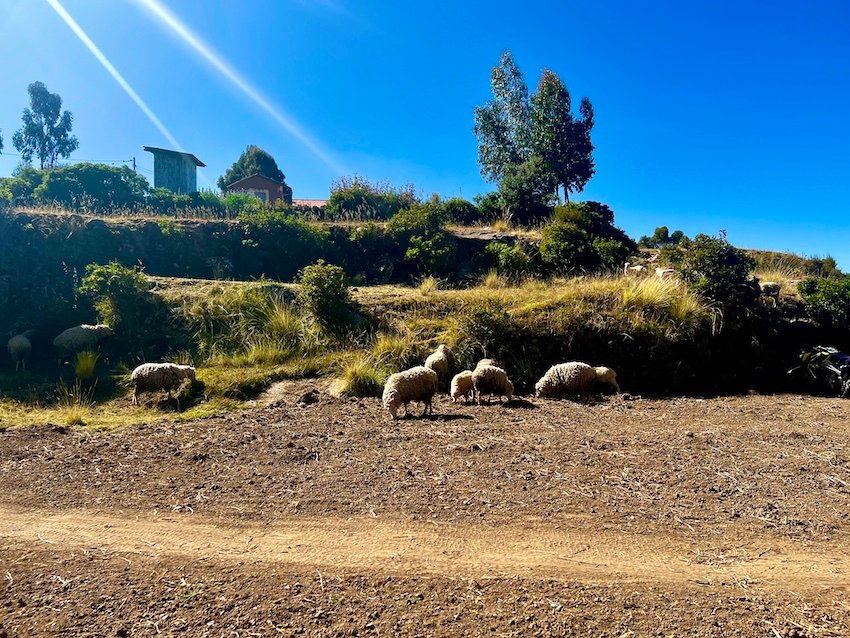

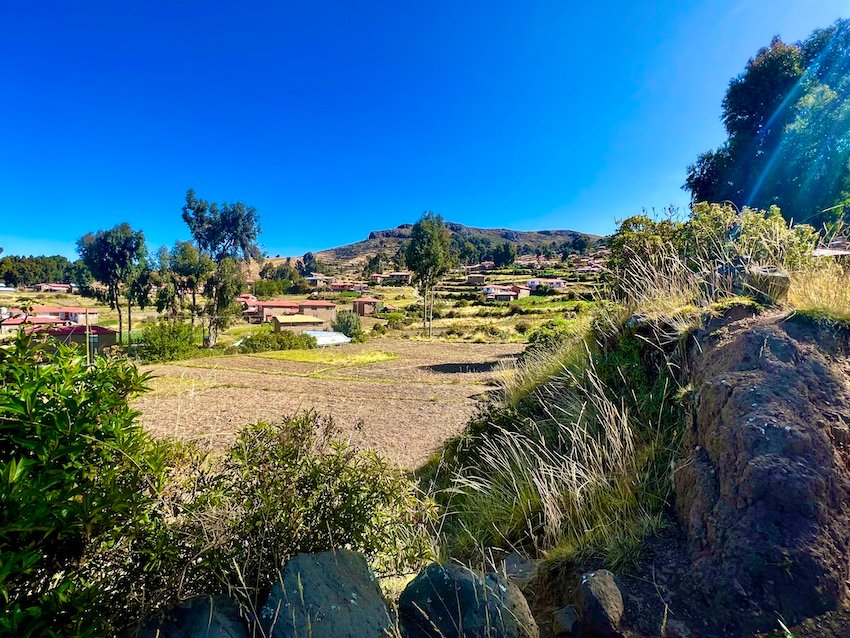
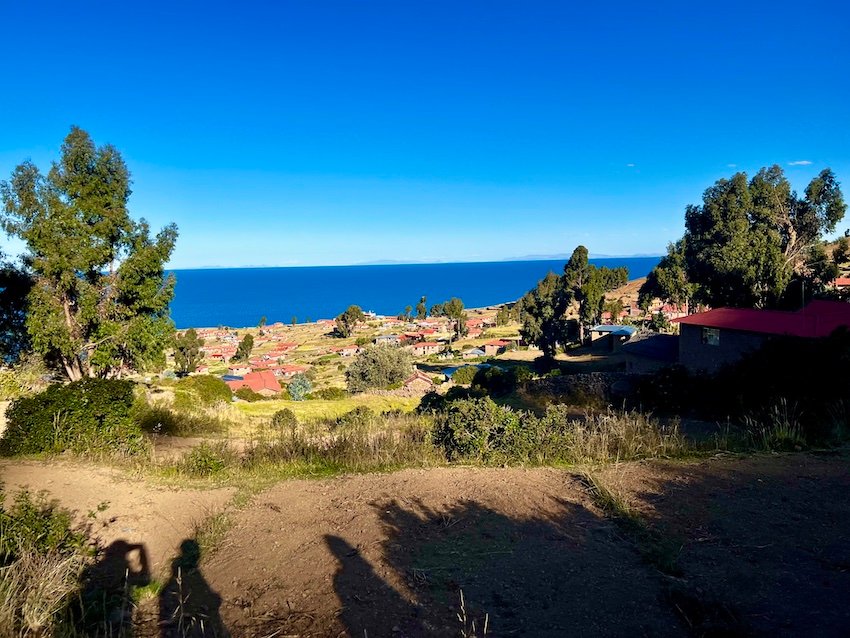
Sebastiana, our host mother, who I estimate to be in her 80s, cheerfully picked us up at the harbour. There are no cars on the island, so we had to walk about 15 minutes to Sebastiana’s home. As it was only the 1st or 2nd day at nearly 4000 meter altitude for most of us, all of us struggled – comically – to keep up with our 80 year old host mother on the walk to her home.
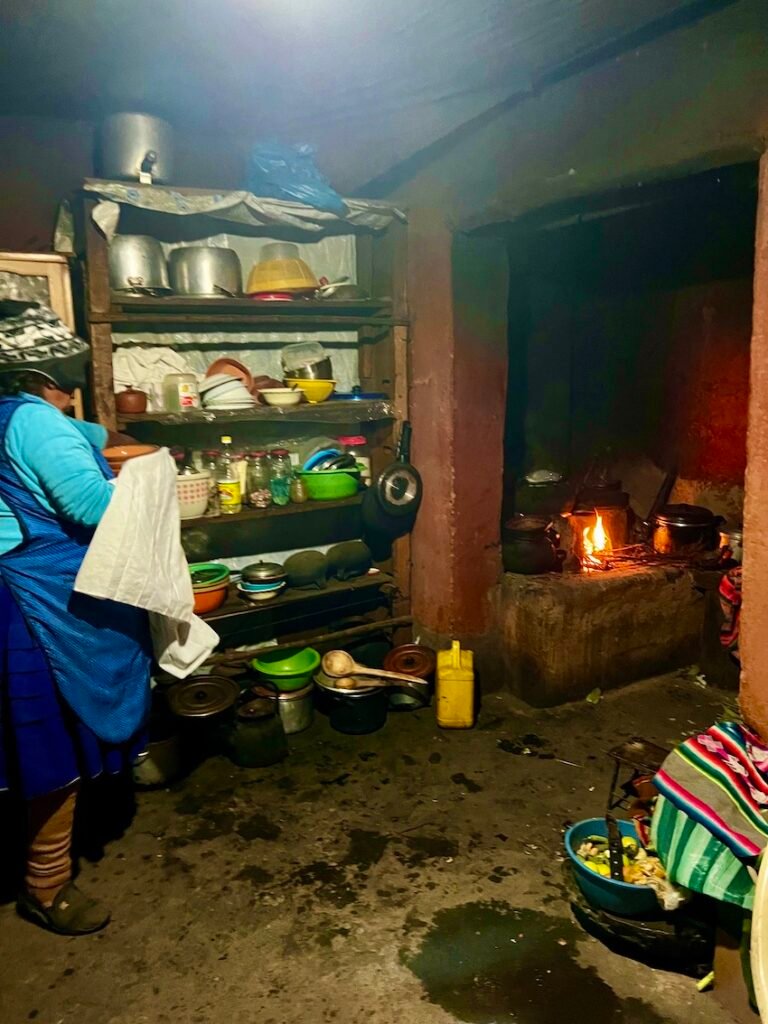
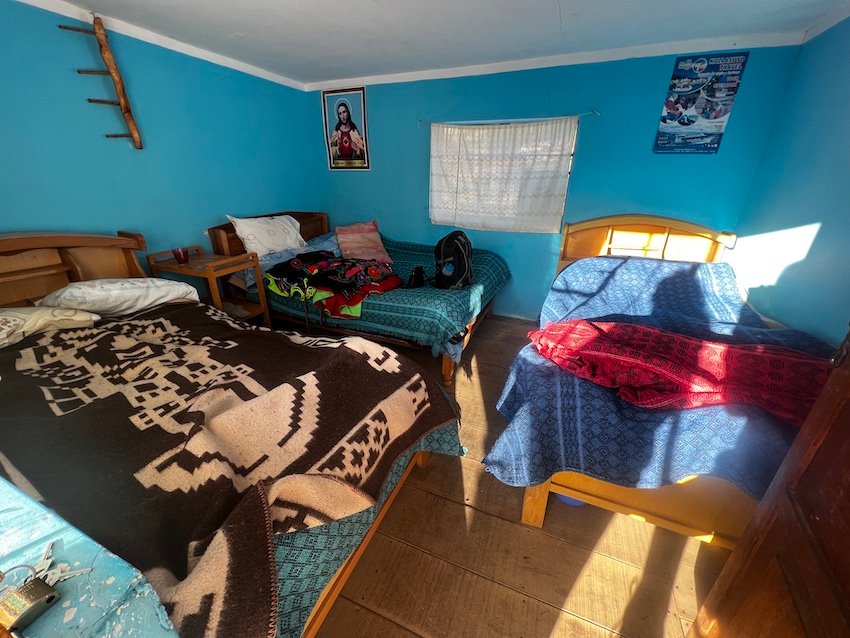


Sebastiana’s home was rustic and beautiful. Surrounded by nature, the simple family compound had a main house with two guest rooms, family living area and a kitchen and dining area. After a delicious homemade lunch, we went for a hike up to one of the island mountain peaks: Pachamama “mother earth”. The sights were beautiful from the mountain top, and we were able to see the sunset before heading back down to Sebastiana’s house for dinner.


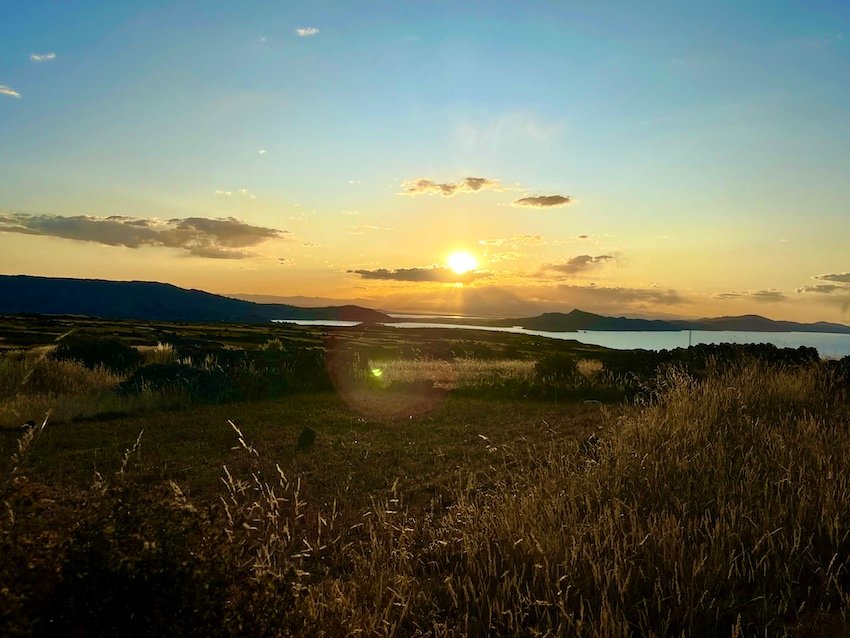


After dinner, Sebastiana’s family dressed us up in traditional outfits, and we went to a lively village party which involved traditional dancing and mingling with the locals until us tourists tired out before the local children.
The next day, we said our tearful goodbyes to Sebastiana and her lovely family. It seemed we had known Sebastiana far longer than our short homestay together. While Sebastiana did not speak English, she did speak Spanish. Over meals, she told us about her family, and we peppered her with questions about life on the island. Some of her family live in Puno, others have lived in Puno, but decided to move back to the island because they preferred the slower pace of life on the island.

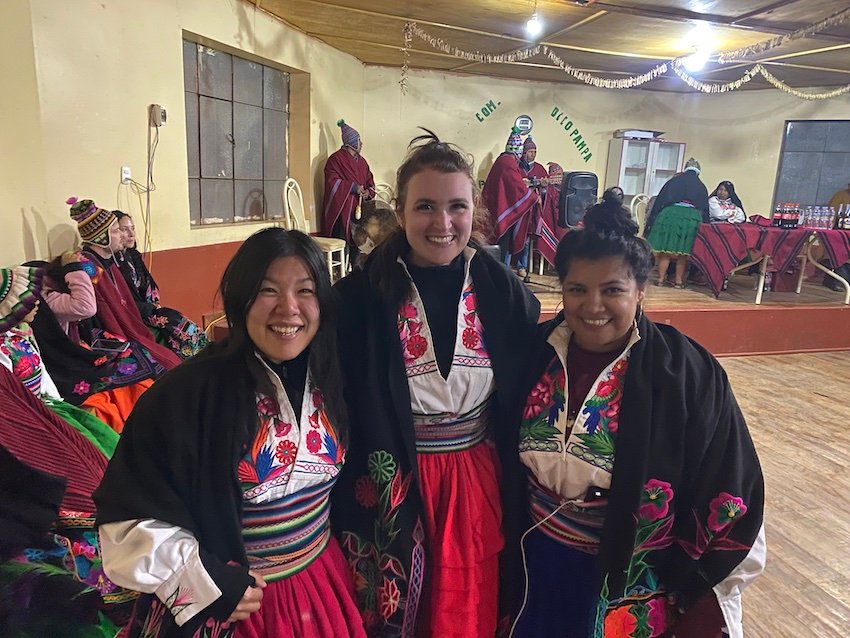

Both Sebastiana’s parents lived past their 100th birthdays. Her father was an astonishing 115 years old when he had passed! He was working, walking and in perfect health until he suddenly fell ill, and passed peacefully over the course of 3 days. Looking at Sebastiana, and all around us on the island, we realized that people – even at advanced ages, are in remarkably good health on the island. The elderly are often in good enough health and mobility to still be working in the fields or with the livestock even after their 100th birthdays. I am convinced I was in the midst of a secret global Blue Zone.


The islanders live a very subsistence-level lifestyle. Sebastiana and her family grow and raise a lot of their own food, and most of the money they make from tourist homestays goes towards school fees for their grandchildren who go to the cities to get an education. It really made me reflect on who was better off in the world. These people who live on barely a few dollars a day – but live long, healthy and meaningful lives full of community and family; or those of us in the western world who make more money in a year than these islanders may see in their entire lifetimes, but rarely live quite as long, and in such good health.

Taquile Island:
After leaving Amentani Island, we headed over to Taquile Island. This small natural island is home to about 2000 inhabitants – many of whom still preserve cultural practices from Incan times, that have endured through the Spanish conquest due to the remoteness of the island.




The indigenous people of Taquile Island have unique cultural practices that we were able to observe during the tour. The island is known for their woven goods, and what is quite interesting, is that weaving is a man’s job on the island. After walking up from the dock to the town centre, we were given a presentation about various cultural customs and practices on Taquile before taking lunch, and then hiking back down to the boat to take us back to Puno.





Final thoughts on my Homestay Experience on Lake Titicaca:
My short-time staying with Sebastiana during my homestay experience on Lake Titicaca has changed the way I see the world. Our western lives are so privileged, but do we actually need everything we think we need? Is keeping up the elements of our privileged lives causing us more grief than good? Seeing people live long, happy lives without the main trappings of privilege that form the corner stones of western life as we know it during my stay on Amantani island has challenged my perception of what is needed to thrive in life. Money cannot buy you a longer, happier life – but purpose, community, belonging and love might.


